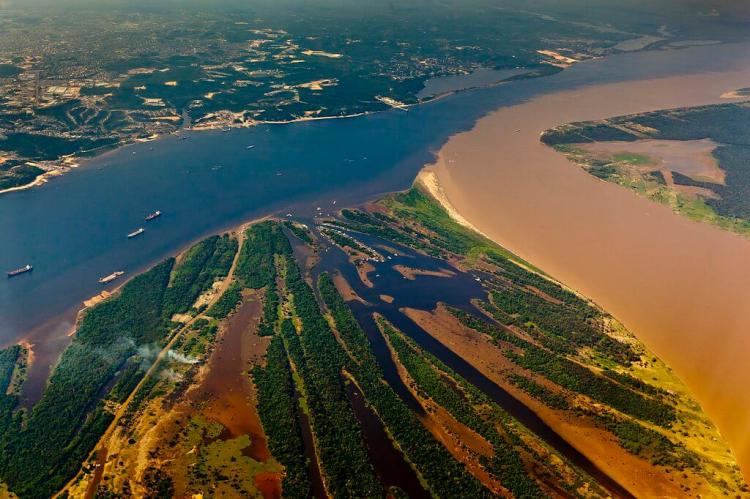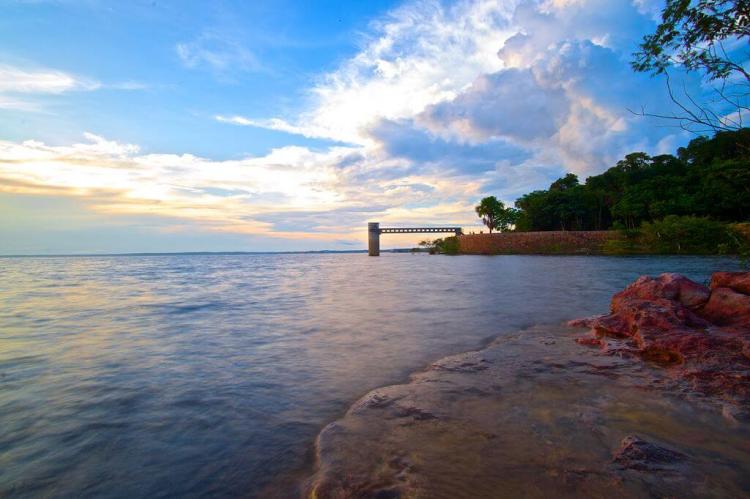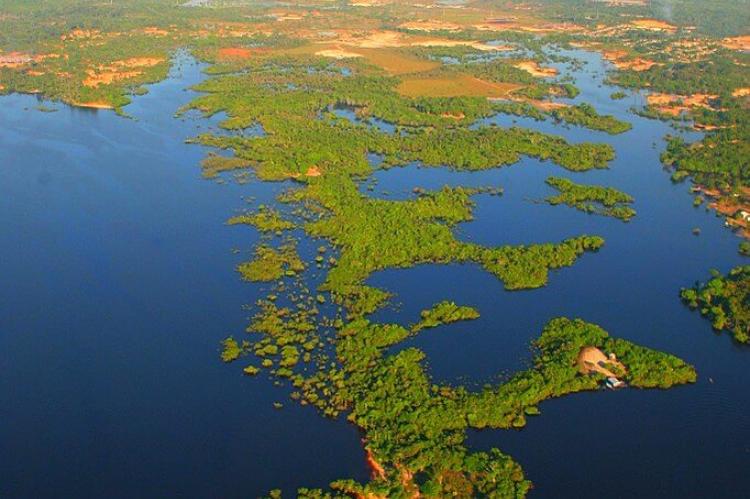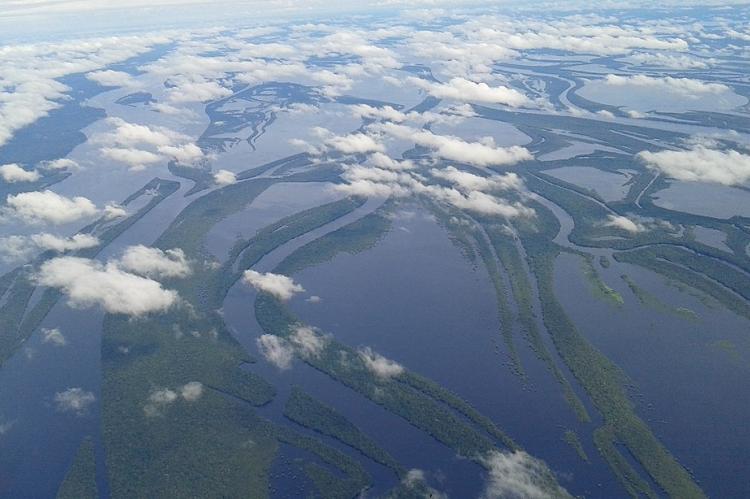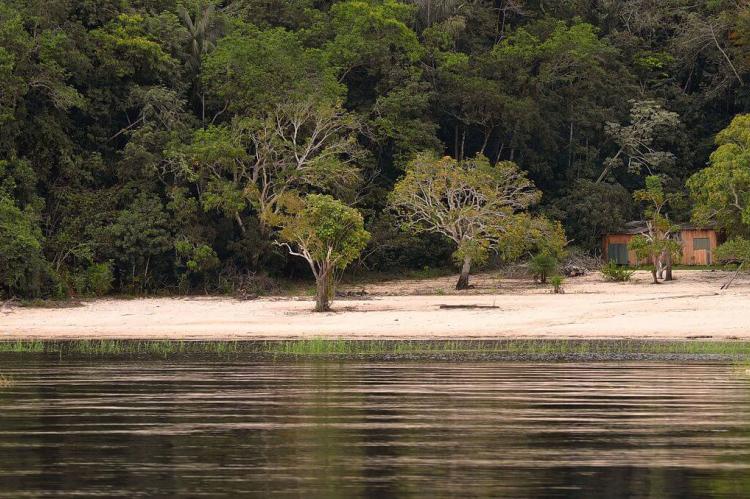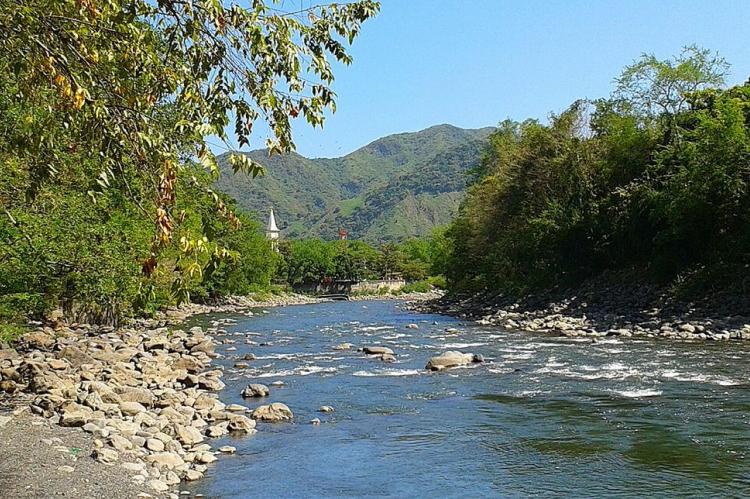The Río Negro: Majestic Heart of the Amazon
Flowing majestically through the heart of the Amazon rainforest, the iconic Río Negro stands as one of the most significant tributaries of the mighty Amazon River. Renowned for its distinctive blackwater and immense size, it is a vital component of the Amazon basin and a captivating natural wonder.
The Río Negro
Majestic Heart of the Amazon
Flowing majestically through the heart of the Amazon rainforest, the iconic Río Negro stands as one of the most significant tributaries of the mighty Amazon River. Renowned for its distinctive blackwater and immense size, the Río Negro is not only a vital component of the Amazon basin but also a captivating natural wonder that draws explorers and adventurers from around the globe.
Geographical and Hydrological Overview
The Río Negro originates in the pristine rainforests of eastern Colombia, where it is known as the Vaupés and Guainía rivers. Tracing its path through dense jungles and rugged terrain, the river extends approximately 2,250 kilometers (1,400 miles), with 1,370 kilometers (850 miles) coursing through the vast expanses of Brazil. As it winds its way eastward, the Río Negro collects waters from various tributaries, including the Vaupés, Içana, Marié, and Branco rivers, enriching its flow and ecological diversity.
One of the defining characteristics of the Río Negro is its status as the largest blackwater river globally, characterized by its dark, tea-colored waters. This unique hue results from the decomposition of organic matter and the presence of tannins leached from surrounding vegetation, giving the river its distinctively rich coloration. Despite its dark appearance, the Río Negro supports a wealth of aquatic life and serves as a vital lifeline for countless species inhabiting the Amazon Basin.
Anavilhanas Archipelago: Jewel of the Río Negro
Anchoring the Río Negro's course is the breathtaking Anavilhanas Archipelago, a sprawling network of islands, channels, and lakes that stretches across the river's expanse. Formed by the accumulation of sediments and debris from the erosion of the Guyana Highlands, the archipelago boasts a mesmerizing delta-like formation, offering a glimpse into the dynamic forces shaping the Amazon landscape.
The Anavilhanas Archipelago serves as a haven for biodiversity, housing a myriad of flora and fauna uniquely adapted to its watery realm. Within its labyrinthine channels and flooded forests, travelers can encounter rare species of birds, mammals, and aquatic life, each intricately woven into the fabric of this vibrant ecosystem. Protected within the confines of the Anavilhanas National Park, this pristine wilderness is a testament to the importance of conservation in preserving the Amazon's ecological integrity.
Meeting of the Waters: A Natural Phenomenon
Descending from the Anavilhanas Archipelago, the Río Negro converges with the Solimões River near the city of Manaus, marking a momentous juncture known as the "meeting of the waters." Here, the contrasting waters of the Río Negro, with its dark, ebony hue, and the silt-laden, ochre-colored Solimões River, merge to form the mighty Amazon River.
The phenomenon of the meeting of the waters is a spectacle to behold, as the distinct currents of the two rivers flow side by side without mixing for several kilometers, creating a mesmerizing display of nature's forces in action. This breathtaking spectacle offers a glimpse into the intricate hydrological dynamics of the Amazon Basin and serves as a reminder of the region's unparalleled natural beauty.
Conclusion: Exploring Nature's Masterpiece
In conclusion, the Río Negro River stands as a testament to the awe-inspiring beauty and ecological richness of the Amazon rainforest. From its origins in the Colombian highlands to its convergence with the Solimões River, the Río Negro weaves a tale of natural wonder and exploration. Whether navigating its dark waters, traversing the labyrinthine channels of the Anavilhanas Archipelago, or witnessing the meeting of the waters in Manaus, the Río Negro offers a profound journey into the heart of the Amazon.
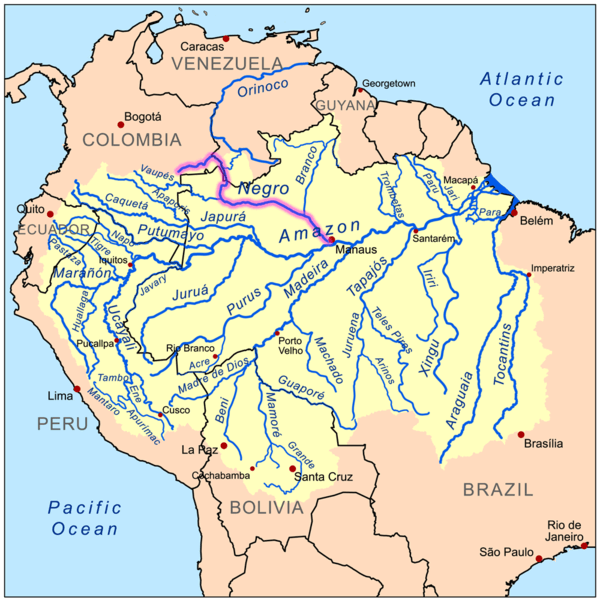
Map of the Amazon River drainage basin with the Rio Negro highlighted.
